The horse sleepily drags your cart along the dusty road out through the temple studded plain. You have been heading north from the ancient town of Old Bagan for some time now toward the small town of Nyaung U. The crimson splatters of betel juice from local chewers marks the places on the road where locals have gathered to talk. Your driver sends a jet of the blood coloured liquid from his mouth as he coos at the horse. In the distance a glimmering golden zedi (stupa) appears to be sitting on a hill. As you near it, the sun seems to gather in intensity on its convex surface. At the mouth of the sheltered walkway that leads up to the temple, you get off your cart and see that the zedi is not on a hill at all. It is on flat ground. This is one of the nine wonders of Shwezigon Paya (golden sandbank), an ancient temple complex that set the style of Burmese pagodas for a thousand years.
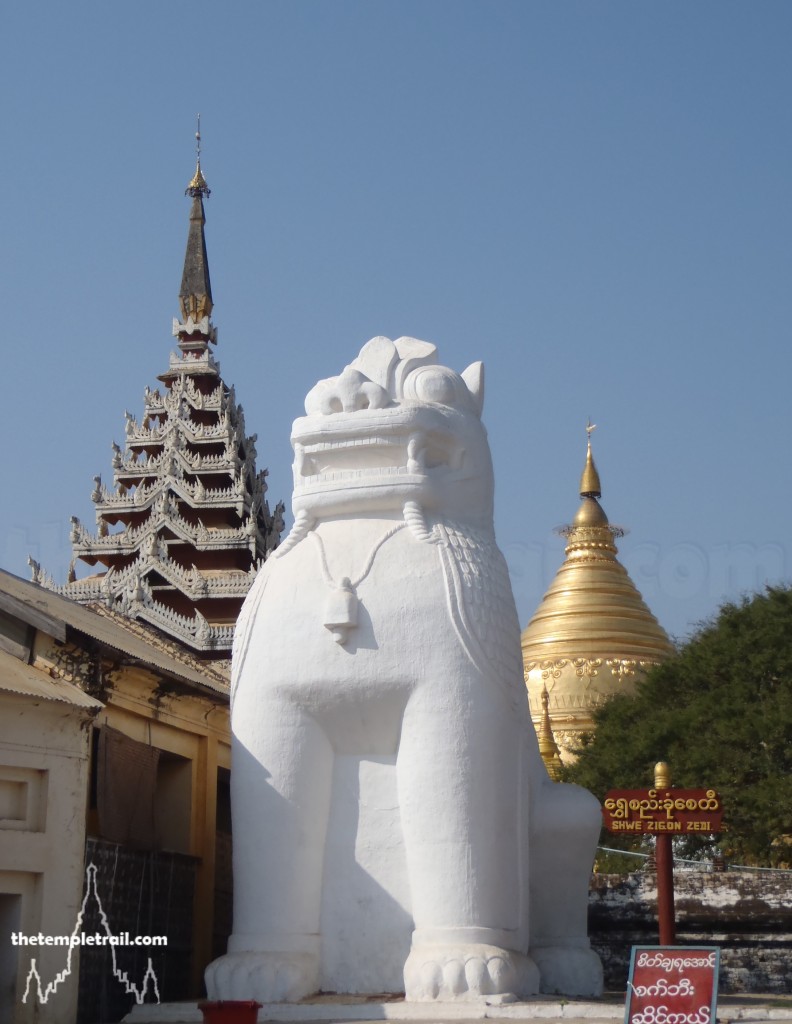
Originally named the Zeyabon, construction of the Shwezigon Pagoda was started in the mid-11th century by the recent Buddhist convert, King Anawratha of Bagan. By his death in 1077, the king had seen three pissaya (terraces) built, along with a small interior zedi that he planned to encase in a larger one. The King had been given a replica of the Buddha Tooth Relic in Candy, Sri Lanka. Legend has it that the King placed the relic on a white elephant and that the elephant stopped and bowed at a sandbank where the pagoda sits. The tooth replica apparently split and became four identical copies. The three additional copies are enshrined in other pagodas and a pilgrimage made to all four in one day is said to bring enlightenment. The pagoda is also said to hold collarbone relics and an emerald Buddha statue. The zedi was finally completed by King Kyanzittha (son and general of King Anawratha) in the late 11th century; albeit smaller than he originally intended. Kyanzittha is seen as one of the great kings and his reign saw many of the great temples of Bagan constructed. He was a huge advocate of Buddhism and his reign was mainly peaceful. During his 28 years of power, Bagan became a kingdom of international recognition.
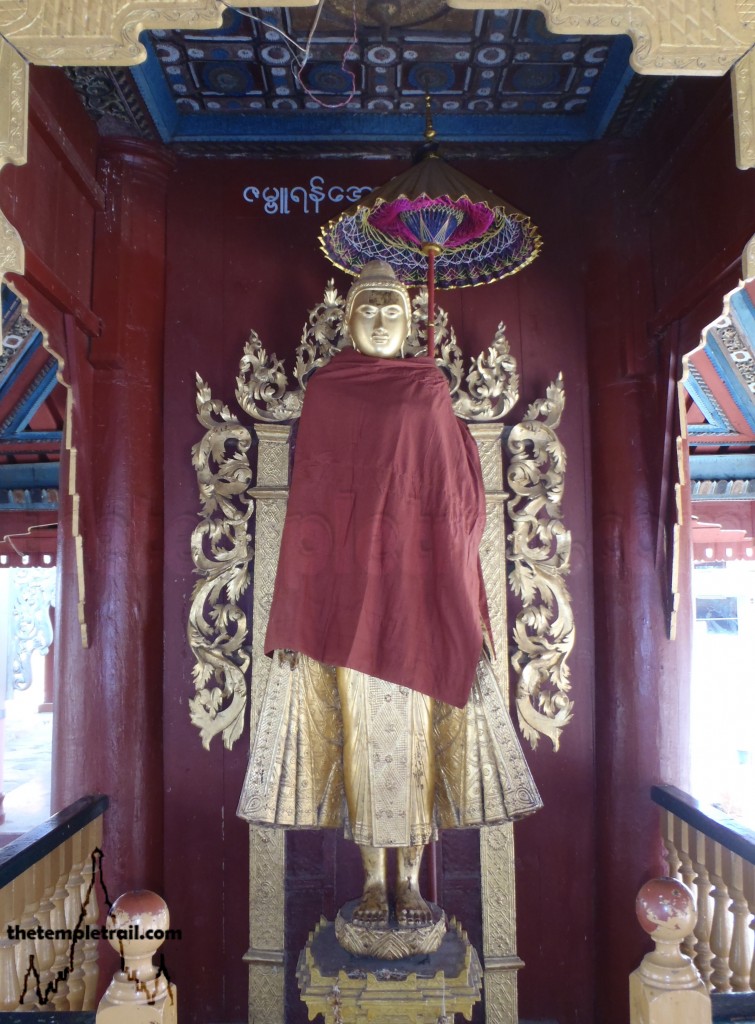
The completed structure was a benchmark in Burmese pagodas and was the first temple to officially endorse the 36 pre-Buddhist nats (spirits). Before Buddhism, Burmese people were generally either Nat worshippers or alchemists. The nats were brought into the Buddhist fold at the time of the building of Shwezigon. A 37th nat was added as the ruler of the others. He is called Thagyamin and is the Burmese version of Sakka (Sakra), the Indian deva (god) who protects Buddhism. He is based on the Hindu god Indra and was placed in the nat pantheon as a way to legitimize them and bring the nat worshippers under the umbrella of Buddhism. Statues of all of the, 37 nats were positioned around the main zedi. These have since disappeared into the hands of a private collector, but replicas can be seen in the house of the nats on the temple compound. The zedi itself was groundbreaking. It was the first to use the bell shape of the upturned alms bowl and the upward and downward facing lotus petal motif. The builders of all subsequent zedis in Burma have emulated its design.
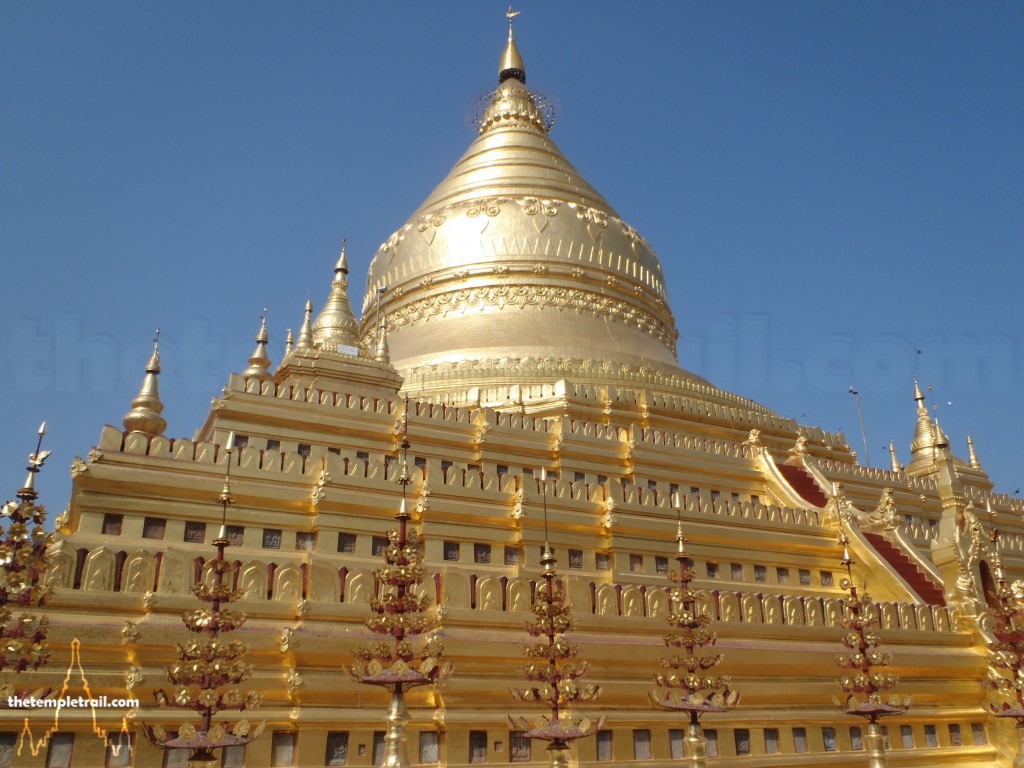
From the eastern entrance of the temple, you walk up the shaded walkway and past the Burmese ladies with thanaka painted faces hawking their wares. There is something casual about the way they throw their sales pitch at you. They don’t seem to try too hard and the serenity of the pagoda already seems to be at work. Here at the eastern entry, are two stone inscriptions written in the Mon language. They are proclamations of Kyanzittha stating that he will give rice and clothing as alms. Bursting forth from the sheltered causeway and into the blazing sun, you are blinded by the glistening golden spire that fills the centre of the sanctuary. On top, its hti (umbrella crown) is magically held without buttresses. The 49 metre tall zedi is built from sandstone and its base is as wide as the structure is tall. Four staircases climb each of the cardinal directions of the zedi and the three pissaya act as a gallery for 550 ceramic plaques depicting Jataka tales (stories of the Buddha’s previous lives). You cannot access the staircases, so you opt to circle the great zedi. The cardinal directions are marked by four kye-gu taik (shrines), each housing a Bagan-style image of the four Buddhas of the current kalpa (time period). The four bronze statues stand gracefully in their body-clinging robes as they present the vitarka (discussion) mudra and the abhaya (no fear) mudra.
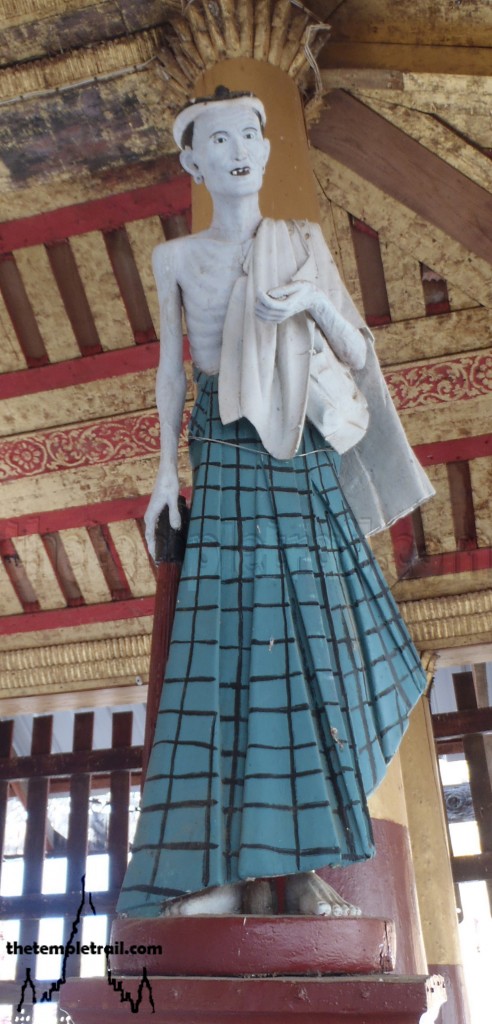
As you meander around, you see various shrines and tazaungs (halls). One of these houses gruesome depictions of the people that Siddhartha Gautama (the historical Buddha) saw when he was still a prince. In the hall, there are a few wooden statues, but the most significant are the old man, the sick man and the dead man. These are the three who made the prince realize that nobody can escape from age, sickness and death. It was these visions that led him to give up his princely life and seek another path. The statues are bizarre and you feel like your head is reeling a little when you view them. The figures seem to leer down at you and relief washes over you as you exit the hall.
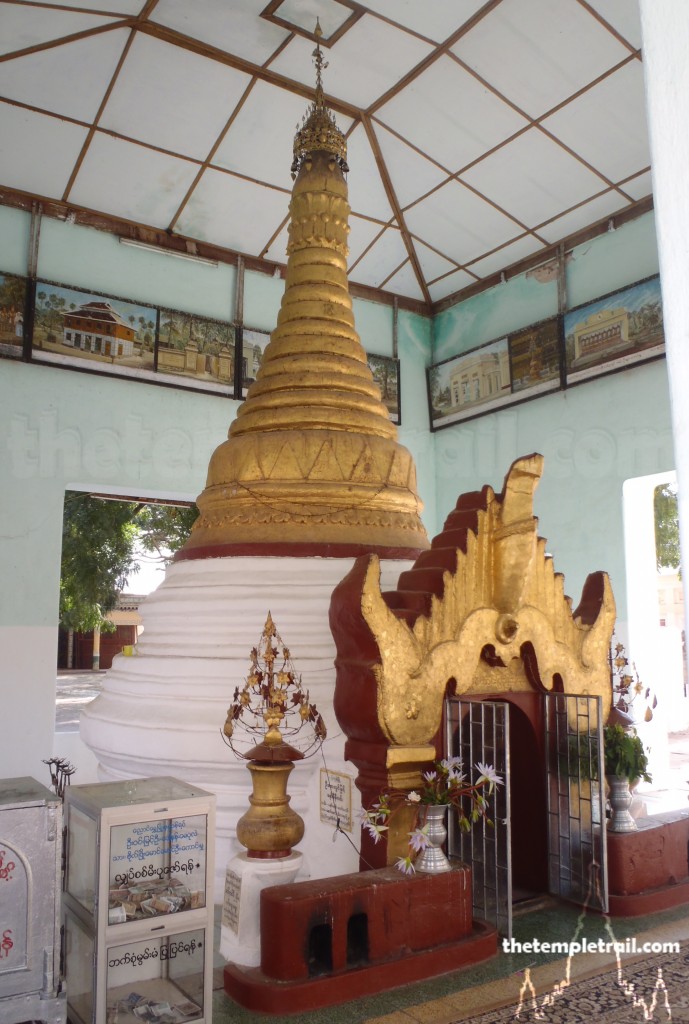
Continuing around the complex, it is filled with shrines and zayats (rest pavilions). Inside these various buildings are beautiful statues of the Buddha and small subordinate zedis. The Burmese style is very apparent everywhere you look. Skirting the enclosure wall, you see one of the nine wonders of the pagoda; the shadows cast by the walls do not change position.
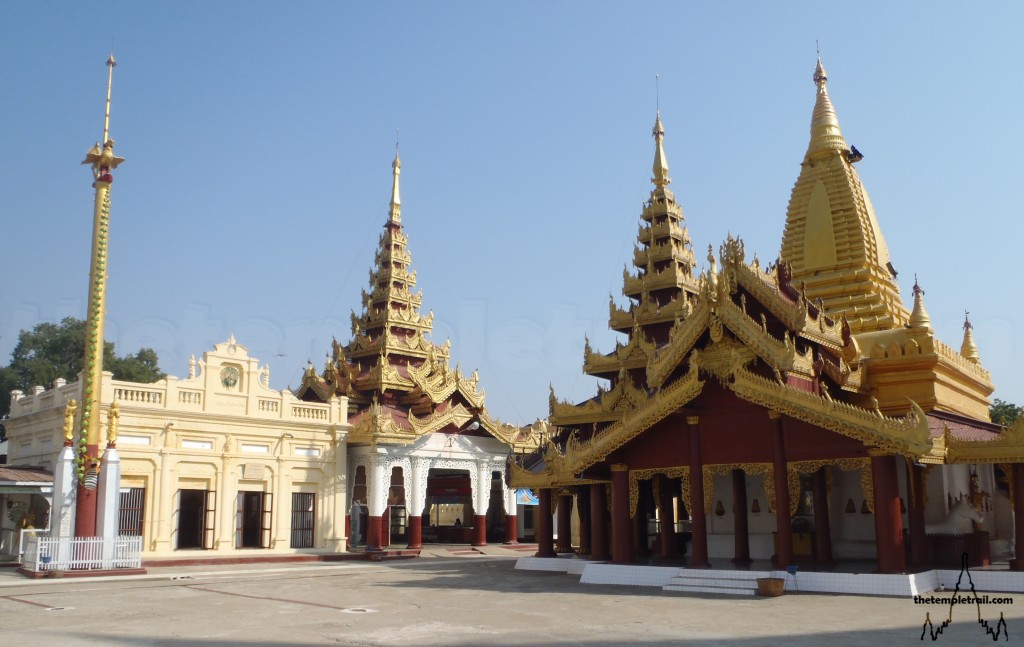
On each of the corners of the sanctuary once stood panet the gu (small brick spires). Only two remain in the northern corners. These small halls give you an insight into how the temple looked before it was spruced up by the government in the 1980s. This was just one of many improvements and renovations done to the site. Bells donated in the mid-16th century by King Bayint Nyuang of the Hanthawaddy Kingdom tell of how he gilded the zedi from top to bottom at that time. The numerous differently styled buildings clearly show how the site has been continuously used and expanded for the best part of a thousand years.
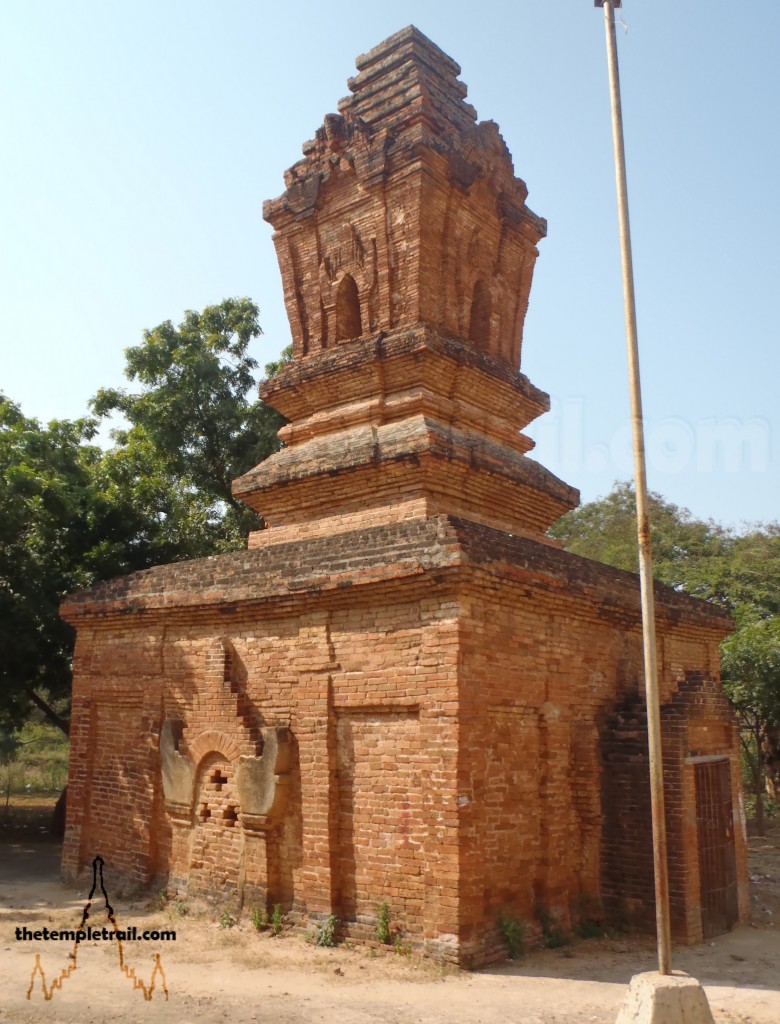
Walking back out of the grounds, you pass the sign that lists the nine wonders of the pagoda. You have seen the non-buttressed hti and the way that the zedi appears to be on a ridge from the distance. You have witnessed the unmoving shadow of the wall and the trees that bloom all year. If you were there on a rainy day, the rain would not gather in the precinct, just as if you drop a gold foil from the top of the pagoda it never falls outside of the enclosure. There is always an early morning offering of rice that is left before anyone is there. The drum on one side of the zedi cannot be heard on the other side and the precinct can hold any number of visitors without seeming crowded.
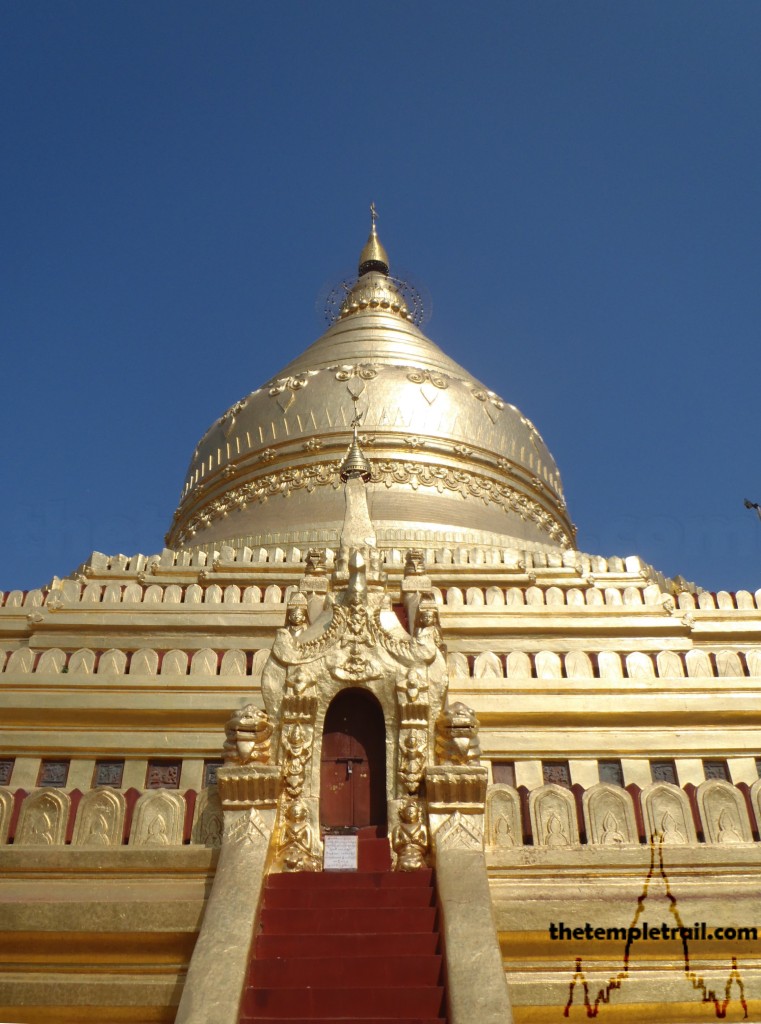
As you exit the gate and return to your cart, you gaze back over your shoulder and marvel at the true wonder; the shining golden zedi that has been the most important feature of the landscape here for a millennia. It makes you feel insignificant, yet somehow, at peace with that insignificance. It has seen generations of people come to pay homage and worship and it will see many more after you are just a distant memory. It is a place of true wonder.
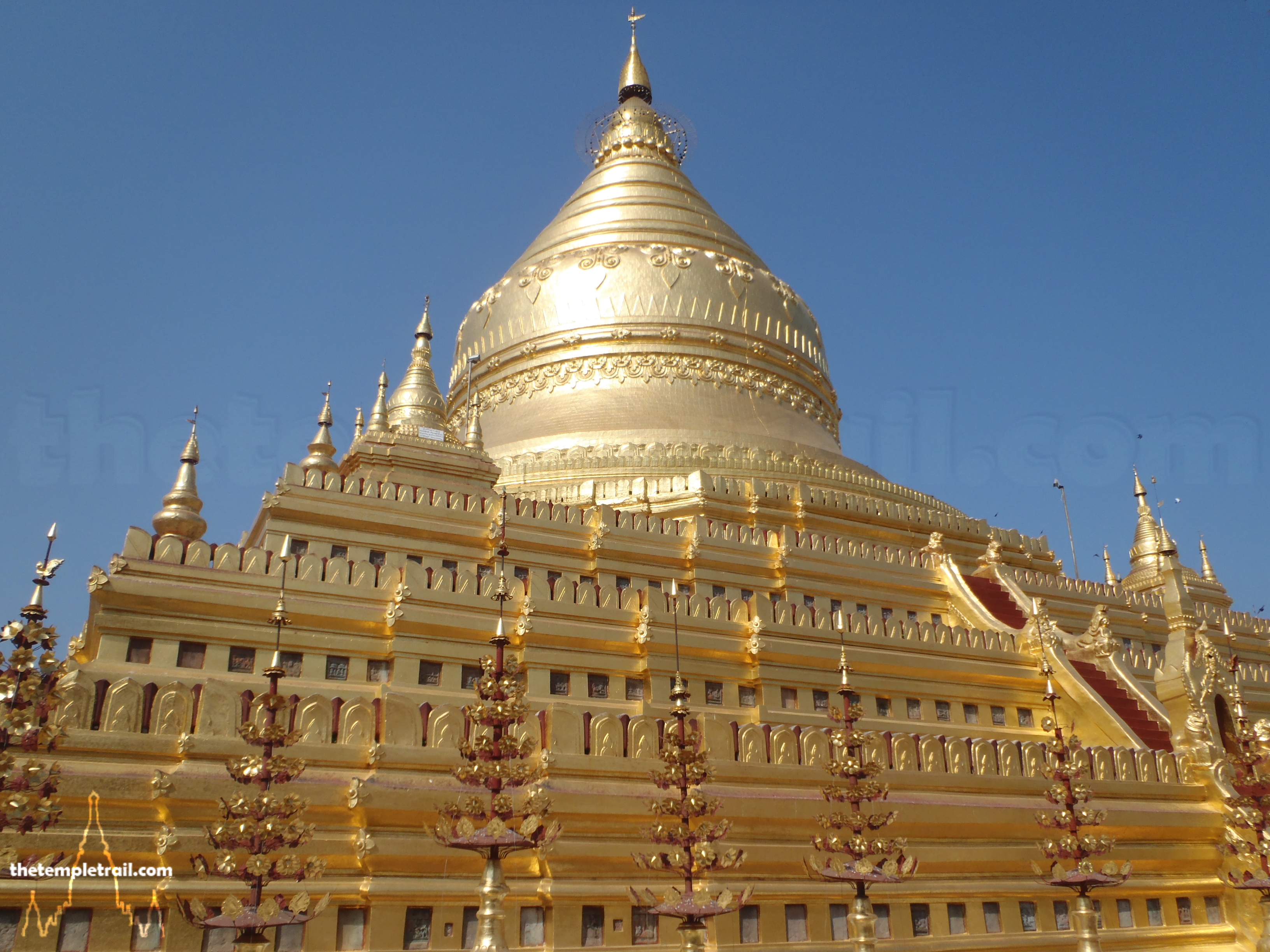

[…] to Bagan, Burmese people were generally either Nat worshippers or alchemists, according to The Temple Trail: Shwezigon. According to Wikipedia: nat (spirit): nats are spirits worshiped in pre-Buddhist Myanmar. They […]